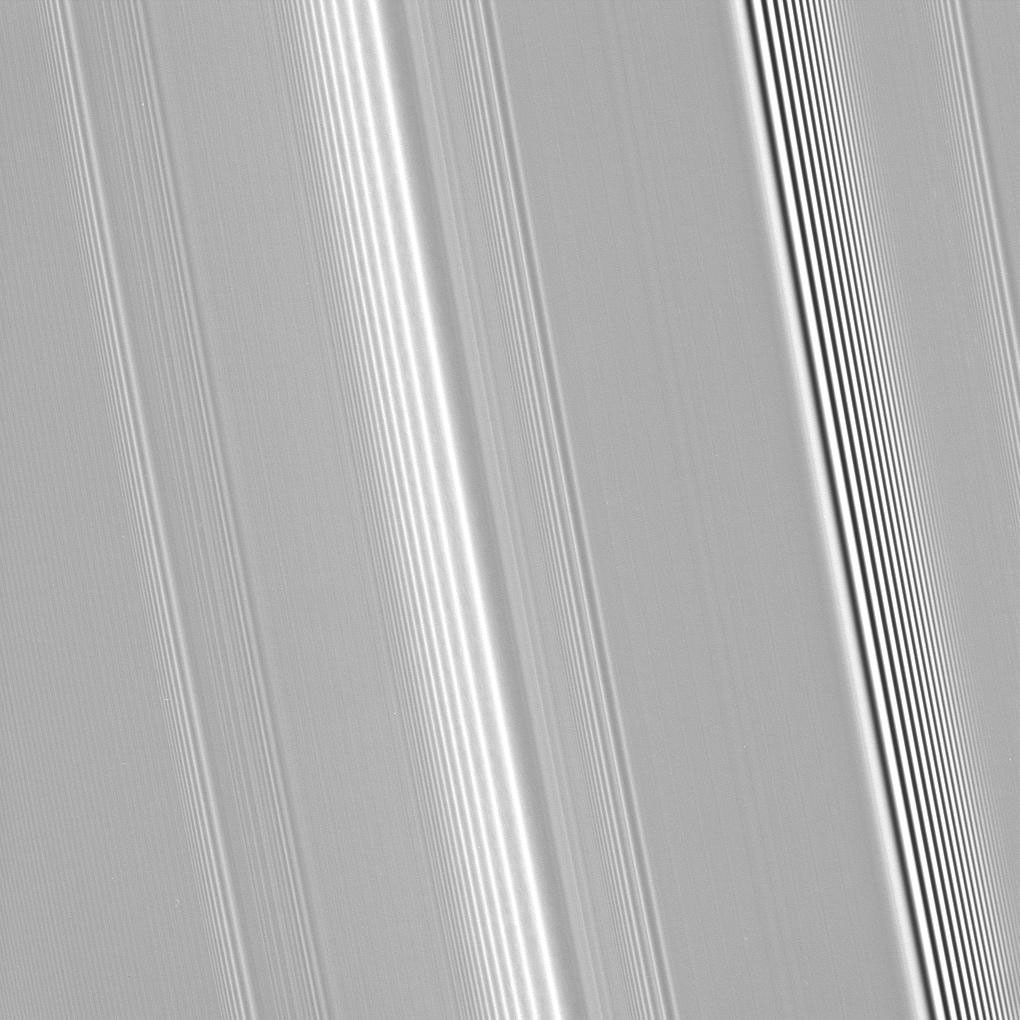Two Kinds of Wave
| PIA Number | PIA10501 |
|---|---|
| Language |
|
Many features in Saturn's rings are thought to be induced by the gravity of the planet's moons. This view shows two different kinds of waves that are thought to be produced by different moon-related effects.
Most of the waves seen here, including the prominent feature near center, are spiral density waves. These waves wrap around the planet many times like a watch spiral. They are the result of gravitational tugs by individual moons whose orbits are in a resonance with the particles at a specific distance from Saturn.
The bright and dark areas in the wave represent more-dense and less-dense regions of the ring. For this type of wave, the wavelength--the distance between bright peaks in each wave--decreases with increasing distance from Saturn (toward left in this image).
By contrast, the wavelength of the intense feature at right decreases toward Saturn (toward right here), indicating that this is a different kind of wave called a spiral bending wave. This wave also winds multiple times around Saturn, but it represents vertical undulations in the ring plane, like a corrugated tin roof. This type of wave is produced by gravitational tugs by moons on inclined orbits as they venture just slightly out of the ringplane.
Cassini scientists will be carefully watching for shadows cast by spiral bending waves as equinox occurs in Aug. 2009 and the Sun passes from the south side of the rings to the north side. The shadows could reveal the height of the bending waves, providing an indirect way to measure key properties of the ring.
This view looks toward the sunlit side of the rings from about 35 degrees below the ringplane. The image was taken in visible light with the Cassini spacecraft narrow-angle camera on Sept. 25, 2008. The view was acquired at a distance of approximately 219,000 kilometers (136,000 miles) above the rings and at a Sun-ring-spacecraft, or phase, angle of 127 degrees. Image scale is 1 kilometer (0.6 mile) per pixel in the radial, or outward from Saturn direction and 2 kilometers (1 mile) per pixel in the longitudinal, or around Saturn, direction.
The Cassini-Huygens mission is a cooperative project of NASA, the European Space Agency and the Italian Space Agency. The Jet Propulsion Laboratory, a division of the California Institute of Technology in Pasadena, manages the mission for NASA's Science Mission Directorate, Washington, D.C. The Cassini orbiter and its two onboard cameras were designed, developed and assembled at JPL. The imaging operations center is based at the Space Science Institute in Boulder, Colo.
For more information about the Cassini-Huygens mission visit http://saturn.jpl.nasa.gov . The Cassini imaging team homepage is at http://ciclops.org .
Credit: NASA/JPL/Space Science Institute

























